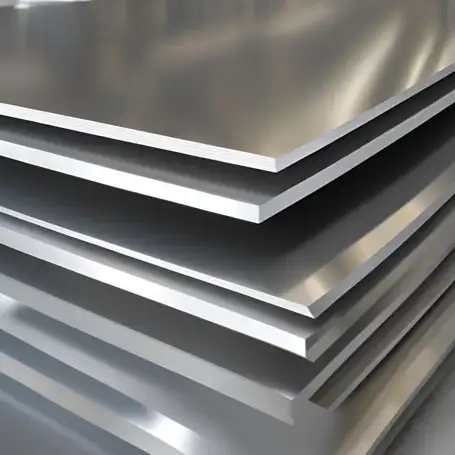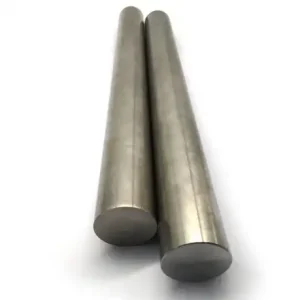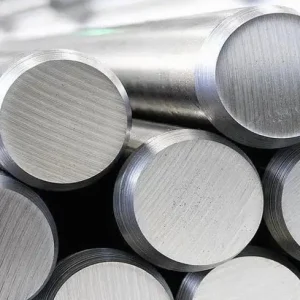Inconel® 625 sheet (UNS N06625) is a high-nickel, chromium-molybdenum-niobium alloy that pairs exceptional corrosion resistance (including seawater and many acids), strong high-temperature mechanical performance up to roughly 980–1,100°C in many service modes, and excellent weldability and formability for a superalloy. For projects that demand longevity in aggressive chemical, marine, oil & gas, or high-temperature environments, 625 sheet is among the most cost-effective choices when lifecycle cost and reliability are weighed against raw material expense.
Specification
-
Trade name / common name: Inconel® 625 (often shortened to Alloy 625; some suppliers call it “Alloy 625 / UNS N06625 / Werkstoff 2.4856”).
-
UNS / EN: UNS N06625, EN/Werkstoff 2.4856.
-
Typical chemistry (summary): high Ni (≈58–62%), Cr ≈20–23%, Mo ≈8–10%, plus Nb (columbium) ≈3.1–4.1% and small Fe balance. These elements are intentional: Ni for base matrix; Cr for oxidation/pitting resistance; Mo and Nb for solid-solution strengthening and improved corrosion resistance.
Chemical composition and metallurgy (why 625 behaves as it does)
Alloy 625 is a solid-solution strengthened nickel-chromium alloy. Rather than relying on an age-hardening precipitation step, its high strength is produced by dissolved molybdenum and niobium in a nickel matrix—this yields stable strength from cryogenic temperatures up to several hundred degrees Celsius and good creep resistance at elevated temperatures. Niobium (columbium) in particular stabilizes the alloy and helps resist localized corrosion and stress-corrosion cracking.
Because the strengthening is not reliant on γ′ precipitation (unlike 718 or other age-hardened superalloys), sheet and plate can be readily welded and formed without complex heat treatments to restore properties. This is one of the practical reasons 625 is popular as sheet and coil for welded assemblies and cladding.
Mechanical and physical properties
Below are representative properties often quoted for mill-annealed sheet/plate (values vary with product form, supplier and heat treatment):
-
Density: ≈ 8.44 g/cm³ (≈0.305 lb/in³).
-
Tensile strength (annealed): roughly 800–1,100 MPa depending on product and thickness/lot.
-
Yield strength (0.2%): commonly in the 380–690 MPa band (varies by product form and spec).
-
Elongation: typically 30–60% (sheet is more ductile than plate/forgings).
-
Modulus of elasticity: ~200–210 GPa at room temperature.
-
Melting range: ~1,290–1,350 °C (solidus-liquidus span depends on batch).
Practical note: suppliers publish product-specific test sheets (MTCs) with exact tensile and hardness values; always request the mill test certificate and a hardness/tensile report for safety-critical parts.
Corrosion resistance (where 625 outperforms most alloys)
Alloy 625 combines high nickel and chromium with molybdenum and niobium to resist:
-
Pitting and crevice corrosion in chloride-bearing environments (seawater, brines).
-
Stress-corrosion cracking (chloride SCC) — 625 is much less prone than many steels and austenitic stainless grades.
-
Resistance to many mineral acids and organic acids; used widely in chemical processing.
-
Oxidation resistance at high temperatures (protective oxide layer forms on heating).
Limits: concentrated hydrochloric acid and some molten salts/halides can attack 625. In extremely oxidizing high-temperature environments, higher-chromium or purpose alloys may be needed. For sour service (H₂S environments) verify NACE/ISO compliance case-by-case.
Thermal behavior and service temperature guidance
Alloy 625 maintains useful mechanical integrity from cryogenic temperatures up to service ranges commonly quoted near 980–1,093 °C (≈1,800–2,000 °F) in many applications. Creep and long-term strength decline with temperature—as with all alloys—so design margins must reflect expected operating temperature and stress conditions.
For gas-turbine or combustion-exhaust components, specialized coatings and design practices are often required; for chemical plant heat exchangers and piping, 625 often offers a cost-effective combination of corrosion resistance and strength.
Fabrication: forming, welding and machining
-
Cold forming: sheet in typical thicknesses forms well but work hardens; intermediate annealing may be required for tight radii or deep draws.
-
Welding: 625 is noted for excellent weldability. Common filler/wire options include matching 625 filler alloys; GTAW (TIG), GMAW (MIG), and SAW are all used. Because 625 is not precipitation-hardened, weld HAZ cracking risk is lower than for some other nickel superalloys.
-
Machining: tougher than stainless steel; use sharp carbide tooling, conservative depths of cut and good coolant. Expect rapid work hardening — rough-out steps followed by stress-relief may help.
-
Heat treatment: solution anneal and controlled cooling are standard for mill material; most end-use parts do not require further strengthening heat treatments.
Standards and certifications
Common specifications and product standards for sheet and plate include:
-
ASTM / ASME: ASTM B443 (sheet/plate), ASTM B446 (bars/rods), ASME SB-443.
-
SAE / AMS: AMS 5599 / AMS 5666 / AMS 5837 (strip, bar/forgings, welding wire).
-
EN / ISO: EN designation 2.4856; ISO/NACE lists for sour service (where required).
-
Mill Test Certificate (MTC): Always request a full MTC with chemical analysis, mechanical test results, heat number traceability and any NDT results required by your project (UT, PMI, hardness, etc.).
If you need material for nuclear, aerospace or subsea applications, insist on the precise aerospace or nuclear specs (e.g., AMS variants, NACE MR0175, NORSOK) and independent test reports.
Sizes, thicknesses and practical weight table
How weights are calculated: density ≈ 8.44 g/cm³ → 8.44 kg/m² per 1 mm thickness. Multiply thickness (mm) × 8.44 to get kg per m².
| Thickness (mm) | Weight (kg/m²) |
|---|---|
| 0.5 | 4.22 |
| 1.0 | 8.44 |
| 1.5 | 12.66 |
| 2.0 | 16.88 |
| 3.0 | 25.32 |
| 5.0 | 42.20 |
| 6.0 | 50.64 |
| 8.0 | 67.52 |
| 10.0 | 84.40 |
| 12.5 | 105.50 |
| 20.0 | 168.80 |
(Use these figures when estimating cut-to-size weights for transport and cost. Actual rolled widths/lengths vary by mill — request exact sheet dimensions for quoting.)
Global price comparison (2025) — practical guidance and figures
Important caveat: specialty-alloy pricing moves with nickel, molybdenum and logistic factors. Prices below are market snapshots and ranges for 2025 from region-focused price indexes and recent supplier price lists; use them for ballpark budgeting only and always request a firm quote and include freight, customs, testing and certification costs.
Approximate 2025 ranges (USD / kg; converted from MT where necessary):
| Region | Typical 2025 price (USD / kg) | Notes / source |
|---|---|---|
| China (factory bulk) | $30 – $38 / kg | Chinese mills generally offer the most competitive factory prices for industrial grades and large lots. |
| India | $32 – $40 / kg | Strong exporter base for plates and pipes; higher for certified aerospace specs. |
| USA (delivered, certified) | $38 – $56 / kg | Higher for certified AMS/ASME material and lower volumes; spot indexes show North America around $56,000/MT Q1-2025 in some reports. |
| Europe / Germany | $40 – $52 / kg | Premium for tight tolerances, traceability and shorter lead times. |
| MEA (Dubai Ex-mill) | ~$41 – $51 / kg (≈$41,000–51,000/MT) | Regional index Q1-2025 reported ~USD 51,015/MT for Alloy 625 sheet ex-Dubai. |
How to interpret: wide bands reflect differences in thickness, finish, certification level (ASTM vs AMS), sheet vs plate, lot size, and logistics. Chinese factory quotes will be lower, but added shipping, duties, inspection and certification raise landed cost. For aerospace, nuclear or subsea projects, European or US certified stock is often chosen despite premium pricing.
Buying tip: for large, recurring orders MWalloys can supply factory direct with competitive pricing and quick stock delivery — always compare total landed cost and lead time rather than raw per-kg price. (More on our offer below.)
Typical applications and case examples
Inconel 625 sheet and plate are used in:
-
Chemical processing: heat exchangers, reactor linings, acid handling trays.
-
Oil & gas / subsea: tubing claddings, manifolds and corrosion-resistant housings.
-
Marine / seawater systems: pump casings, seawater strainers, flanges where chloride pitting is a risk.
-
Aerospace & power: combustion liners, exhaust components, turbine casing linings (where temperature & corrosion coexist).
-
Nuclear & research reactors: select core components and heat exchangers (given proper certification).
Case example (typical): a chemical plant replaces austenitic stainless heat-exchanger tubes with 625 cladding to halt chloride-induced cracking; the initial material cost rose, but unplanned outages dropped dramatically and total lifecycle cost fell after two years.
Procurement checklist and quality control
When ordering Inconel 625 sheet, insist on the following:
-
Material grade & spec: state UNS N06625 and the applicable spec (ASTM B443, AMS 5599/5666 if aerospace).
-
MTC (mill test certificate): full chemical analysis and mechanical test results traceable to heat number.
-
Surface finish requirement: mill finish, pickled, cold-rolled 2B etc. specified.
-
Dimensional tolerances: thickness, flatness and edge condition.
-
Third-party inspection: for critical parts, arrange certified lab testing (PMI, tensile, hardness, NDT).
-
Packaging & labeling: seaworthy packaging and clear marking by heat number and spec.
-
Lead time & delivery terms: EXW, FOB, CIF — confirm responsibilities and insurance.
Storage, handling and surface finish options
-
Store flat in dry, clean environment to prevent surface contamination.
-
Avoid contact with carbon steel surfaces (risk of cross-contamination and staining); use separators.
-
For improved corrosion performance, some applications specify pickling or passivation after fabrication.
-
Sheet is available in mill finish, cold-rolled 2B, polished, or custom surface treatments — pick according to end use.
Sustainability and recycling
Inconel 625 is a high-value alloy and is recyclable. Scrap recovery (turnings, offcuts) should be segregated and sold back to specialty metal recyclers or returned to mills. Recycling reduces lifecycle carbon footprint compared with primary production and helps control alloy availability and cost volatility.
MWalloys product offering (how we can help)
As MWalloys, our supply proposition for Inconel 625 sheet is built around three promises:
-
Factory pricing: we source direct from qualified Chinese mills and stock standard sheet sizes — enabling true factory-level pricing for industrial orders.
-
Fast stock delivery: commonly stocked thicknesses and widths ship in short lead times; custom cuts arranged on request.
-
Quality & traceability: each batch includes full MTCs and optional third-party inspection; we can supply material to ASTM B443, AMS variants, and NACE/ISO sour-service checks where required.
If your project needs fast quotes, tell us desired thickness, standard (ASTM/AMS), quantity and preferred delivery term — we’ll return a firm EXW/FOB quote with MTC and lead time.
FAQs
-
Is Inconel 625 magnetic?
No — 625 is essentially non-magnetic in the annealed condition due to its nickel matrix. -
Can Inconel 625 sheet be welded to stainless steel or carbon steel?
Yes — welding dissimilar metals is possible but use appropriate filler (often matching 625 filler) and control dilution; post-weld treatments depend on service. Request welding procedure specifications (WPS) for critical assemblies. -
What thicknesses are standard for sheet vs plate?
“Sheet/strip” commonly refers to thinner items (0.1 mm up to ~6 mm cold-rolled; 3–10 mm hot-rolled), while plate is thicker. Refer to ASTM B443 for precise definitions. -
How does Inconel 625 compare to 718?
625 has better corrosion resistance and weldability; 718 offers higher strength when age-hardened but is more sensitive to welding due to precipitation-hardening microstructures. -
What certificates should I require?
MTC to ASTM/AMS spec you require, chemical and mechanical test reports, and any NDT or PMI if requested. For subsea/nuclear, ensure NACE or equivalent compliance. -
How much does 625 sheet cost in 2025?
See the global price table above — expect ~$30–56 / kg depending on region, spec and quantity; always ask for firm quotes. -
Can 625 be used in H₂S (sour) environments?
It can, but verify NACE MR0175 / ISO 15156 conformance for the exact product and heat; specialist advice is recommended. -
Is cold forming possible for thin gauge 625?
Yes — thin strip and sheet form well; however, multiple bends or deep draws may need annealing between steps. -
Does 625 require special storage?
Keep dry, separate from carbon steel, and store flat to prevent deformation. -
What is the typical lead time from Chinese mills?
For stocked items MWalloys commonly offers short lead times; custom or certified aerospace lots require longer. Ask us for a specific ETA for your required size and certification.
Final procurement advice
-
State exact spec (UNS N06625 + ASTM/AMS as relevant).
-
Confirm required surface finish and dimensional tolerances.
-
Request full MTC and specify any third-party inspection ahead of PO.
-
Compare landed cost (freight + duties + inspection + insurance) across suppliers — cheapest per-kg is not always the cheapest project outcome.
-
For safety-critical or regulated sectors, insist on AMS / NACE flagging and traceability.





